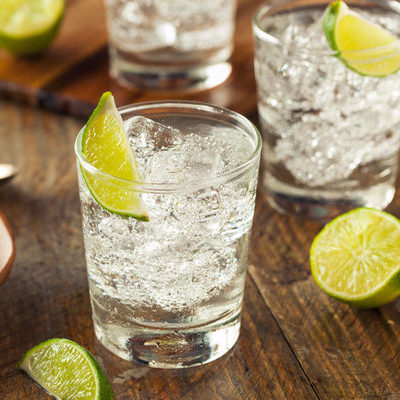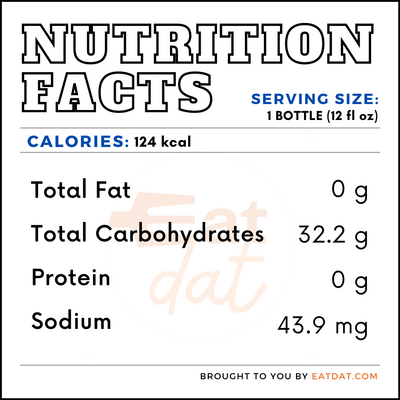
Tonic Water
What is Tonic Water?
Tonic water is a clear, carbonated drink that contains quinine. Quinine is a bitter compound that originates from the Cinchona tree and is used to treat malaria.
The global market for this was valued at $530 million in 2017 and is expected to reach $850 million by 2023.
According to The Manual, the top 8 tonic brands for cocktails are:
- Jack Rudy Cocktail Co.
- Schweppes
- Canada Dry
- Q Spectacular
- Fentimans
- Fever-Tree Premium Indian
- Boylan Heritage
- Double Dutch Cranberry and Ginger Tonic
Origin of tonic water
Quinine is extracted from the bark of the Andean Cinchona tree, which was discovered to have healing properties in the 17th century. A man named Joseph Priestly later discovered how to make carbonated water in 1767 and would approach Jacob Schweppe with his invention. Water carbonation methods would evolve over the century, but it wasn’t until 1820 that two French pharmacists would combine carbonated water with quinine.
In 1858, a patent for tonic would be awarded to Erasmus Bond of the Schweppes company in London. Twenty years later, the company began producing its tonic water product called Indian Tonic. The popularity of tonic water in Great Britain continues to this day with many people associating gin and tonics with the Brits. Nonetheless, this effervescent beverage is still enjoyed around the world. However, nowadays, people don’t use it as a cure for malaria, but as a refreshing libation to usher in a good time.
Nutrition
While this beverage garnered attention for its use as a healing tonic, the modern-day version is slightly different. Tonic is cholesterol-free, low in sodium, and fat-free. A 12 fl oz serving of this drink can contain:

This beverage is considered less healthy than sparkling or mineral water for its high-calorie count and sugar content. The FDA recommends that sugar make up no more than 10% of your daily calories, and therefore, it’s best to consume this beverage in moderation.
Commercial production
The commercial production of this drink begins with quinine, an alkaloid of a tree bark found in the Andes mountains in Peru. Quinine is dissolved in water and sweeteners such as sugar, agave nectar, or high fructose corn syrup are added to offset its bitterness. Other ingredients such as herbs and spices can be added to give tonic water more flavor. Finally, carbonation is added to the drink and the beverage is bottled, labeled, and stored until ready to be sold. Tonic water is commercially produced all over the globe. However, the demand for craft gin in the Americas is leading to an increase in demand for this beverage there, as well.
Use
As a carbonated drink, tonic water is both light and refreshing. However, to enjoy this beverage to the maximum, you should ensure that it is stored properly. Unopened bottles of this drink have a long shelf life as long as they are stored away from light and heat. If the bottle is opened, it should be tightly sealed after each opening and kept in the refrigerator. For optimum taste, be sure to follow the ‘best by’ date printed on the packaging.
Tonic water recipes
This is a versatile beverage that can help craft a variety of cocktails. Here are some popular recipes:
FDA Regulation
The Food & Drug Administration has strict regulations concerning the use of the food additive quinine in tonic. This regulation stipulates that quinine must not exceed 83 parts per million in the product. The FDA also requires that the use of quinine be clearly labeled on the product or in a separate declaration. The severity of this regulation relates to studies which have shown that quinine can cause nocturnal leg cramps in some individuals.
References
“Soda: Beverage.” Truefoodfact.com, True Food Fact, 18 Aug. 2020, truefoodfact.com/beverage/soda/.
“Just the Tonic: A Natural History of Tonic Water.” Kew.org, Royal Botanical Gardens Kew, 19 Oct. 2019, www.kew.org/read-and-watch/just-the-tonic-history.
Adrian, Stefan. “Tonic Water: Here Are Seven Facts About The Bitter Thirst-Quencher.” Mixology.eu, Mixology Magazin Für Barkultur, 28 July 2020, mixology.eu/seven-facts-about-tonic-water/.
“CFR – Code of Federal Regulations Title 21.” Accessdata.fda.gov, U.S. Food & Drug Administration, 1 Apr. 2019, www.accessdata.fda.gov/scripts/cdrh/cfdocs/cfcfr/CFRSearch.cfm?fr=172.575
